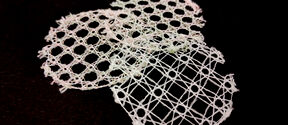Sustainable Materials for Future Mobility Lighthouse (EIT RawMaterials)

Challenge: Emerging energy and mobility technologies create a strong demand for raw and advanced materials, and for some critical raw materials this demand will dramatically exceed current production in the next 10-15 years. Limited access to these materials and their respective processing capacities might negatively impact the mobility transition, thus reducing the competitiveness of European actors downstream.
Approach: EIT RawMaterials will support innovation and critical knowledge to solve challenges in the mobility sector. This LH focuses on the raw materials and advanced materials for two key innovation trends in mobility: electrification and lightweight design. It coordinates materials-related innovation actions across the mobility value chains with respect to exploration, mining, processing, recycling, substitution, and the implementation of the Circular Economy.
LH topics across the value chain:
battery raw materials mining and processing from a primary or secondary European source. The Mobility Transition creates a growing demand for sustainable raw materials by European OEMs. There is an unlocked European potential of primary and secondary sources (Li, Co, Ni, Mn, graphite).
advanced materials, processing, battery cell design. Solid state battery materials and technologies are expected to be the next disruptive technological developments in battery technology, particularly regarding safety and energy density.
mining, extraction, processing, recycling. Over the last 8 years, the European Commission and the Member States have financed several R&D initiatives in REE extraction and processing from primary and secondary sources. Until today, no project has materialised in a European industrial production of rare earth oxides and metals.
towards an improved Life Cycle Inventory database for raw materials and advanced materials related to e-mobility; ethical sourcing; traceability. Raw materials and advanced materials of batteries have a significant impact on the overall footprint of electric vehicles. However, there is a lack of data for raw materials and advanced materials in respective LCI databases.
energy and material efficiency processing; ethical sourcing; new alloys. Steel and aluminium are the dominant structural material in cars. Today, aluminium alloys and composites can hardly compete in terms of cost/performance ratio, recyclability, and environmental footprint. The amount of high strength steels and metallic alloys used in the automotive sector is rising to reduce weight. To achieve high performance, they typically contain critical metals.
Development of clever business model to develop a raw materials recruitment company. A collaboration between all three partner groups of the knowledge triangle would be anticipated.
Read more news

Smart textiles are reshaping our understanding of materials – and interspecies communication
The PAST-A-BOT research project, funded by the European Research Council (ERC), is developing soft, intelligent textiles that could one day function as rescue robots, sound-sensing agricultural fabrics, or assistive clothing. At the same time, the project aims to rethink the way we approach materials research.
Sebastian Szyller: I want to make machine learning more dependable and resilient to attacks
Sebastian Szyller has been appointed assistant professor at Aalto University Department of Computer Science as from 1 September 2025. He studies how to train privacy-preserving machine learning models, how to safeguard them and ensure robust predictions in untrusted environments
Meet the new ELLIS Institute PIs: Azade Farshad advances AI for medical applications
Farshad’s research background is in computer vision and generative models.






